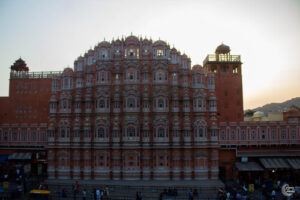Agra, a city often overshadowed by one of the Seven Wonders of the World, is waiting to be explored step by step, revealing its many hidden treasures.
When most people hear the name Agra, the first image that comes to mind is undoubtedly the Taj Mahal. And while this association is not incorrect—the Taj Mahal’s status as one of the Seven Wonders draws millions of tourists each year—there is much more to discover in this historic city.
Taj Mahal at 6:00 AM
Located on the banks of the Yamuna River in the northern state of Uttar Pradesh, India, Agra lies 378 kilometers west of the state capital, Lucknow, and 206 kilometers south of the national capital, New Delhi. It is one of the most populous cities in Uttar Pradesh and ranks as the 24th most populous city in India.
Agra is a major tourist destination, known for its splendid buildings. Three of its most famous landmarks—the Taj Mahal, Agra Fort, and Fatehpur Sikri—are all designated as UNESCO World Heritage Sites. Agra is also part of the Golden Triangle tourist circuit, which includes Delhi and Jaipur, as well as the Uttar Pradesh Heritage Architecture circuit, which features Lucknow, the state capital, and Varanasi, the famed holy city of India.
I arrived in Agra early in the morning, around 2:30 AM. My first thought was to head straight to the west gate of the Taj Mahal to be the first in line, as I was eager to capture the sunrise at this iconic wonder. However, the idea of catching the sunrise is more challenging than it seems. Since the gates open at 6:00 AM, the sun is already up by then. Still, arriving early is crucial if you want to take photos without crowds.
Trying to catch the Taj Mahal empty is a nearly impossible challenge; finding a spot without people is extremely difficult. It’s best to go directly to the key locations and focus on getting your best shots as quickly as possible.
The Taj Mahal can be thoroughly explored in about three hours, including the time spent waiting in line to get inside. This average time may vary depending on individual interests. It took me this time to take photos and fully appreciate the intricate architecture, but your experience might differ.
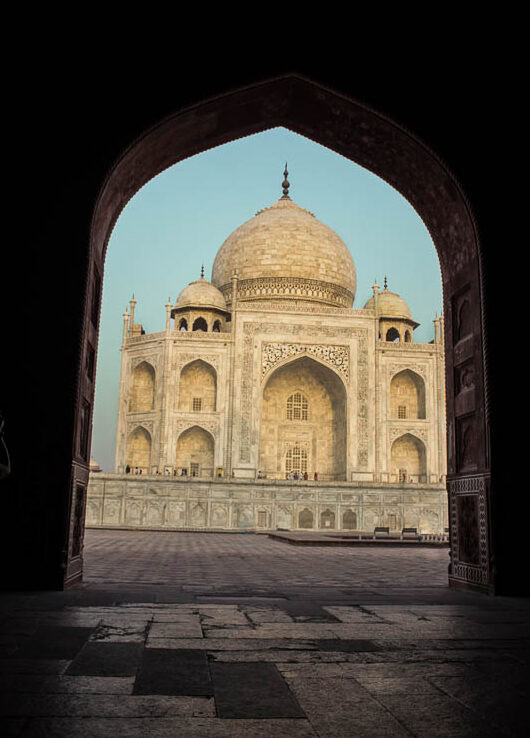
For foreigners like me, the entrance fee to the Taj Mahal is 1,000 Rupees (USD 14.65), while Indian citizens enjoy a much lower fee of 40 Rupees (USD 0.59). This significant price difference is notable, but it’s the cost of experiencing this world-famous landmark.
One of my top recommendations is to bring as few items as possible. Why? Because backpacks and heavy items are not allowed inside. Fortunately, the Taj Mahal’s organization provides lockers where you can safely store your belongings.
If you’re a photographer like me, don’t forget to pack a very light bag with the essentials: two lenses (a zoom and a wide angle), empty memory cards, extra batteries, and plenty of creative ideas for capturing every moment. But as mentioned earlier, be prepared to work around the crowds, as they will inevitably find their way into your shots.
My First Impression: A Dream Come True
All my life, I’ve been aware of the seven wonders of the world. Since I was a little girl, I’ve known them all, and thanks to my dad, I can still recall each one vividly. So, when the opportunity for this trip came, I was beyond excited. How can you be in India and not visit the Taj Mahal? To me, it’s like going to Paris and not taking a picture of the Eiffel Tower—simply unthinkable. While I understand that for some, these landmarks might not hold the same importance, visiting the Taj Mahal was an absolute MUST for me.
I waited in line for about 30 minutes, eagerly counting down the moments until I could step inside. And then, as I walked closer… pow! There it was—the Taj Mahal, right in front of me. I could hardly believe it. It wasn’t just the magnificence of the structure that overwhelmed me; it was the realization that I was so far from home, sitting on a bench in front of the Taj Mahal—something I had never imagined in my wildest dreams.
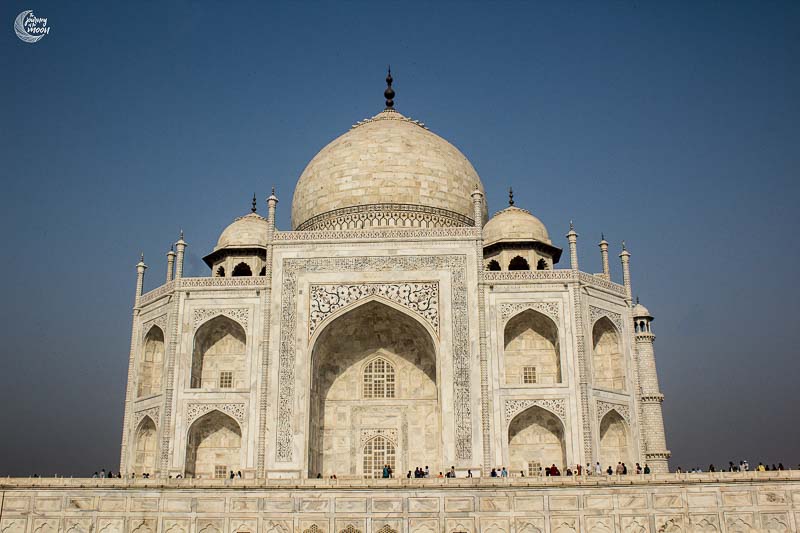
It was a dream—one of the main reasons I came to India—and an absolute MUST on my bucket list. The Taj Mahal is undeniably beautiful, very, very beautiful. But at the same time, I found myself a little disappointed. Perhaps I had set my expectations too high, or maybe the constant exposure to the Taj Mahal through the internet and social media made it feel overly familiar. When I finally stood before it, I couldn’t shake the feeling that I had already been there so many times, that I knew the place from every angle.
Majestic as it is, I must admit that I’ve seen places that left me even more awestruck. For instance, El Cañon del Chicamocha in Colombia, though not officially recognized as a landmark, is a true wonder in my eyes. Or Akshardham in New Delhi, a stunning temple built in this century, which I found equally, if not more, impressive. These are just my perspectives, of course, and opinions on such iconic sites can vary greatly.
As a lifelong traveler, I’ve realized that I’m more drawn to natural landscapes than to architectural marvels. But that’s a story for another day. In the end, I got my photo—the photo that made the trip worthwhile, an internal joke to myself.
So, the question is: After the Taj Mahal, what should I see? What’s next? Should I just go back to my hotel? The answer is NO. Agra is much more than just the Taj Mahal or Agra Fort—which, by the way, is stunning and, in my opinion, even more impressive than the Taj, though I don’t want to create any bias. I spent my morning immersing myself in ancient traditions and learning about the rich history behind these iconic structures.
After visiting the Taj, my next destination was the Tomb of I’timād-ud-Daulah, also known as the Baby Taj. This building, which predates the Taj Mahal, is often regarded as a draft or precursor to the Taj. Along with the main building, the complex includes several outbuildings and beautifully maintained gardens.
The tomb, constructed between 1622 and 1628, marks a significant transition in Mughal architecture. It bridges the first phase, characterized by red sandstone structures adorned with white marble decorations, and the second phase, which is more prominently based on white marble with intricate Pietra dura inlay work—a style that is elegantly realized in the Taj Mahal.
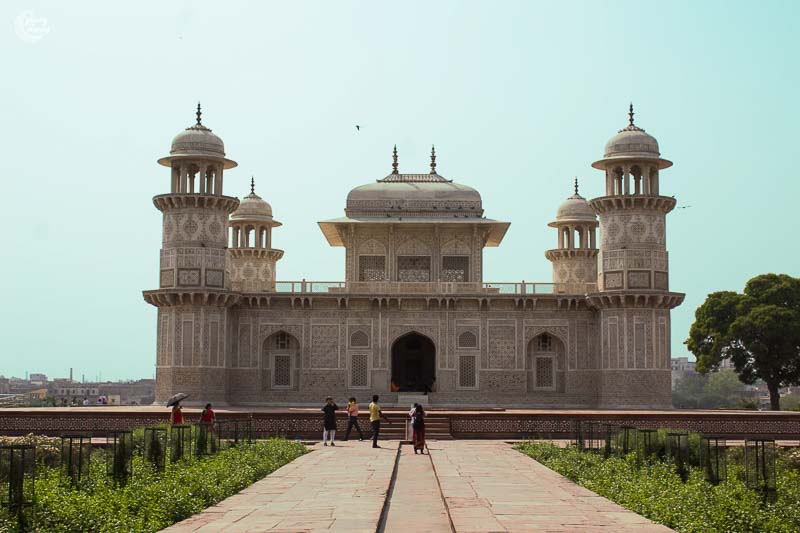
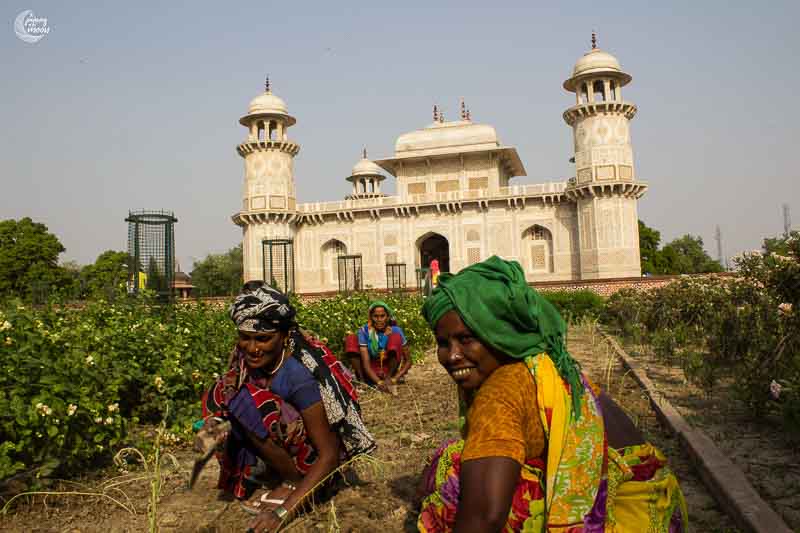
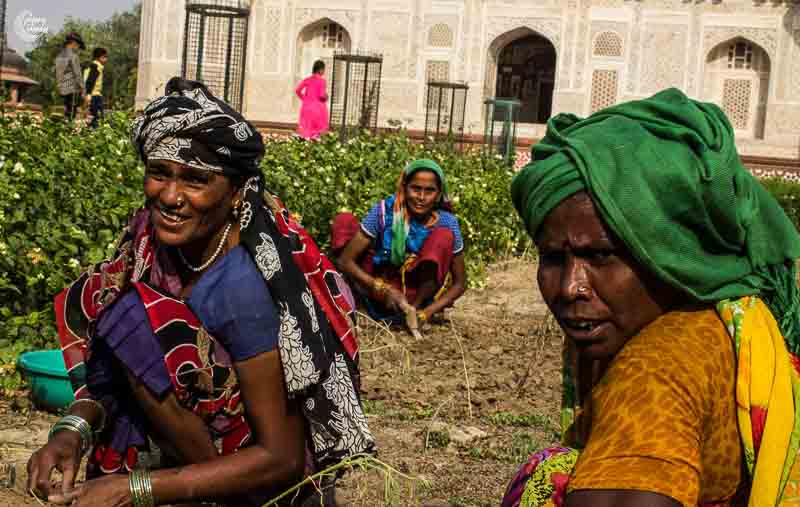
At that hour, my body was melting due to the intense heat of the day. Enduring 40-degree weather is tough, especially for someone who struggles with temperatures over 30. My hometown is Cali, Colombia, and although it’s a warm city, it never gets this extreme. By the time the tour of landmarks finished around 3:00 PM, I was exhausted but still eager to learn more about the city. I headed to Agra Beat, a travel agency known for offering great tours for travelers and tourists.
The first thing on the agenda was a city tour around the Old City, the real Agra. Like Delhi, Agra has an Old and a New part. In Delhi, the Old City is famously crowded and chaotic—what I like to call a «lovely typical chaos.»
Why do I refer to the chaos as lovely? Well, for me, it’s delightful to witness the real essence of a city. I enjoy experiencing the best of a place in its natural environment—not just the typical tourist spots like visiting the Taj Mahal in the morning and then leaving by the afternoon. What about the rest of the town? By exploring beyond the usual, I discovered a different world and learned so much about Indian culture and traditions.
Old Agra has a unique magic that fully immerses you in the Indian atmosphere, which, from my perspective, is a beautiful mess. Don’t be alarmed; it’s an amazing mess—one that makes you fall in love with this country and its way of life.
Cars honking, motorcycles weaving through the streets, cows and dogs wandering freely on the roads, and me, savoring local food in Mughal Bazar. Old Agra is truly a different world, with some of the best spots being Rawat Bada, Seth Gali, and Kinari Bazar.
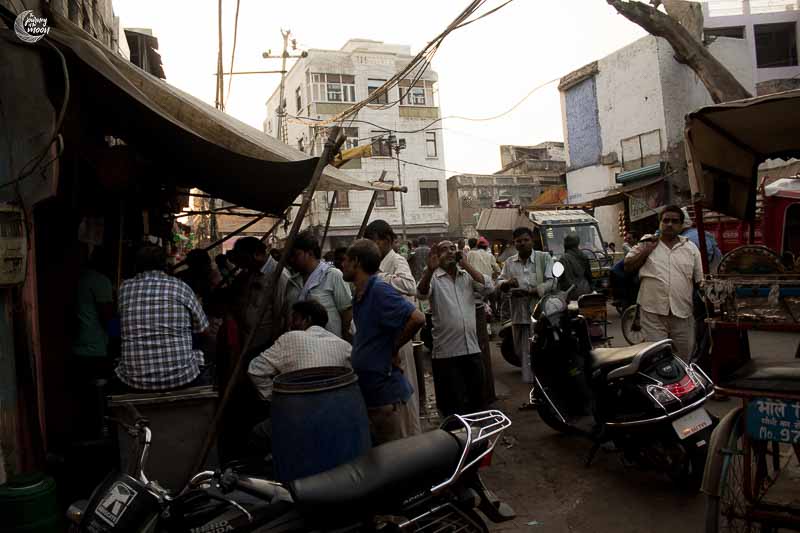


After the tour of Old Agra, I found myself in New Agra—a completely different contrast, yet it reflects the same captivating essence. There are plenty of things to do, starting with a stroll through Sadar Bazar and a visit to Mankameshwar Temple to pray to Lord Shiva, the God of heart’s wishes. According to tradition, if you make a wish to Lord Shiva with a pure heart every day, he will fulfill it. However, you must keep the wish to yourself, in secret.
In New Agra, you can indulge in the famous street food tour, which offers a variety of delicious snacks I had never tried before. For example, the Aloo Tikki Potato is like a fried cake made with potato and dry fruits inside—it quickly became my favorite! But there are tons of options to choose from to find the best one for you. You also can’t miss the Paan Trading experience, Petha Daresi (a delightful dessert), the famous Naan, and one of the best, Cheela – Dal – Paneer – Ginger, which offers a perfect combination of sweet and spicy flavors.
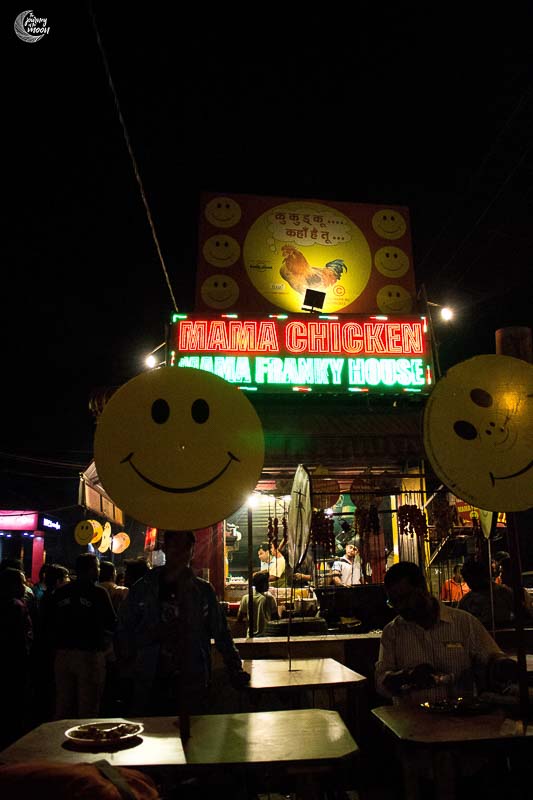
Just when I thought the food tour was over, I discovered the most delicious chicken in town at Mama Chicken. This restaurant offers a wide variety of chicken dishes, all infused with spices and special ingredients that make the flavors irresistible. I highly recommend the Reshmi Chicken, which is mild and perfect for those who, like me, prefer less spicy food. Mama Chicken is a well-known spot, bustling with people who appreciate good food.
By 9:00 PM, I was exhausted, so I told my tour guide, VJ, that I wanted to rest up and prepare for the next day’s adventure—a cycling tour around the local villages.
No Time to Rest!
At 7:00 AM, I found myself ready to embark on a bicycle tour through the nature of Agra City. Our first stop was Dashermpra Ghat, where you can capture the iconic photo of the Taj Mahal with a boat in the foreground. If you’re interested in taking this photo, you can visit the location and pay just 150 Rupees per person (USD 2).
Next, we cycled to a very special place: Nagla Pema Village—a community where kindness is the norm. The warmth and hospitality of the locals were remarkable. Interacting with the villagers, playing with the children, sharing meals, and visiting their homes provided experiences unlike any other.
Entering that house, I had a heart full of expectations, but I left a piece of it behind.
This is India—where sharing knowledge, experiencing new ways of life, and recognizing our shared humanity are truly valuable.
At Dilip’s home, I enjoyed a delicious chapatti with chai and potatoes. Dilip, only three years old, captured my heart in an instant.
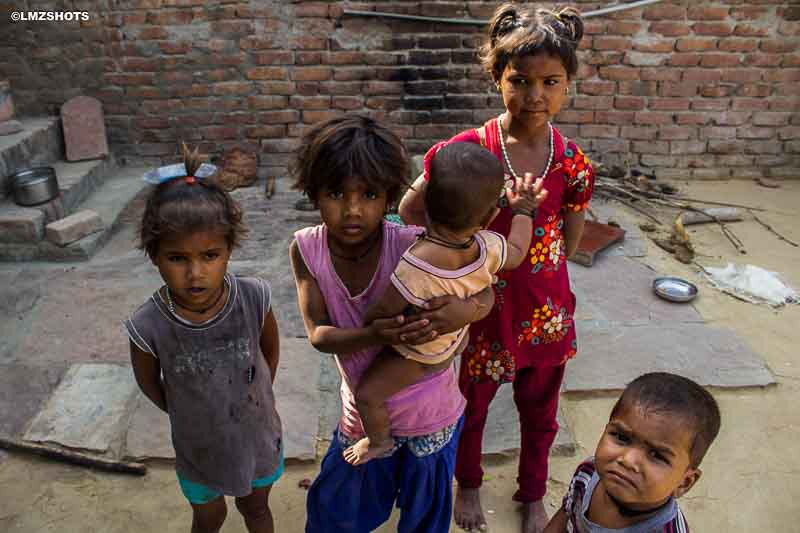

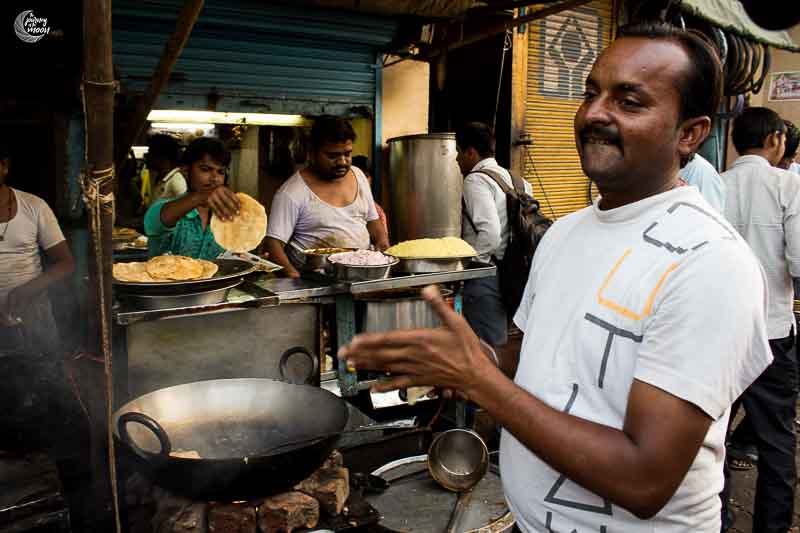

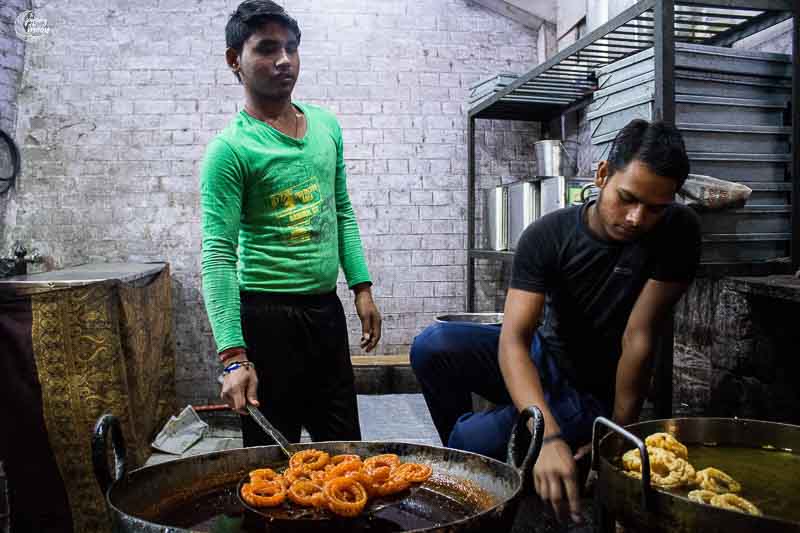

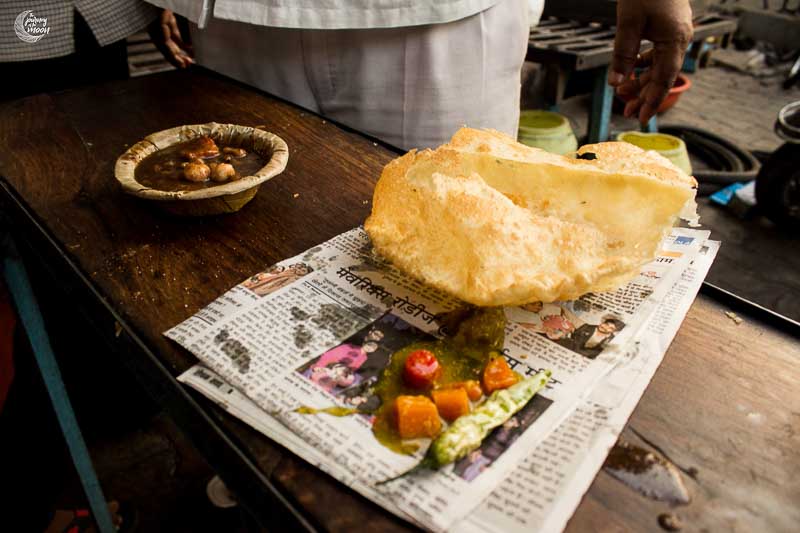
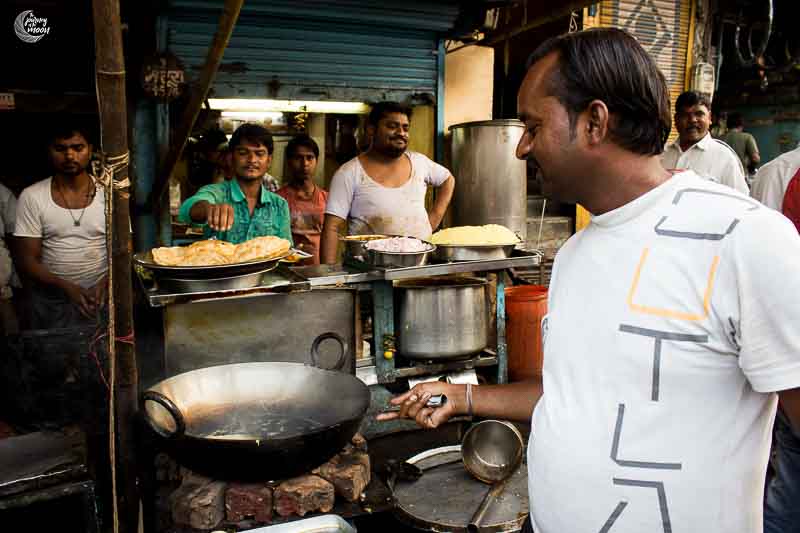
Meeting Local People is the best way to immerse yourself in the culture and learn new things. During my visit, I learned how to make Chai and discovered the difference between Roti and Chapatti. Although they use the same flour, the preparation methods make them distinct.
For Chapatti, the dough is rolled out and then placed directly on the fire, which makes the bread puff up. In contrast, Roti is baked using only your hands, resulting in a different texture and taste.
The family that welcomed us into their home provided an unforgettable experience. Their hospitality and willingness to share their culinary traditions were truly remarkable.
Experiencing the magic of being open to new adventures reveals countless things to discover.
In the evening, my destination was Agra Fort, an ancient fort located in the city of Agra. Once the main residence of the Mughal Dynasty emperors until 1638, this fort can be accurately described as a walled city, offering a wealth of historical sites and attractions to explore.
Having these experiences is one of the most valuable gifts someone can receive. The rich insights gained from interacting with local people and immersing oneself in a new culture are truly extraordinary. Getting in touch with the real city and its authentic atmosphere adds depth to any journey.
Exhausted but enriched, I made my way to the bus station to return to Delhi. My trip was filled with tons of pictures, a wealth of new knowledge, and an array of delicious dishes to add to my culinary list. Adventure awaits at every corner.
I went to Agra to see the Taj Mahal, but I ended up discovering much more—multiple wonders, landmarks, and adventures.
Special thanks to my friends: Cami Diaz, Younes Mchiche, and Ana Bronze for their support.

Journey Information
This unforgettable trip would not have been possible without the assistance of Agra Beat and Vijendra Singh (VJ). For more information about similar experiences, visit www.agrabeat.com or contact them at +91 90271 99464 and +91 84458 70893.
With Agra Beat, you can:
- Meet local people
- Learn how to cook traditional dishes
- Ride a bicycle in nature
- Visit the village school during the week
- Play with children
- Explore the Taj Mahal and other local monuments
- Savor delicious local food



